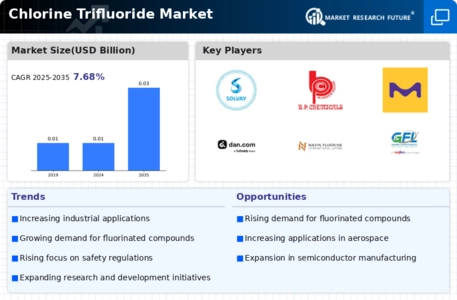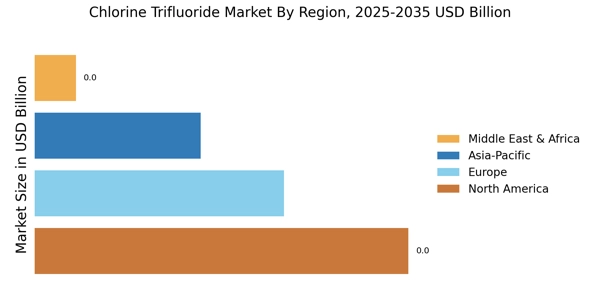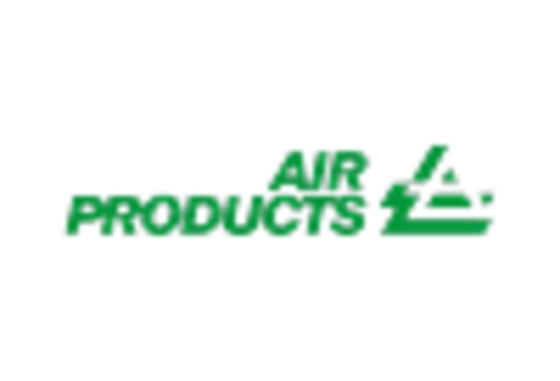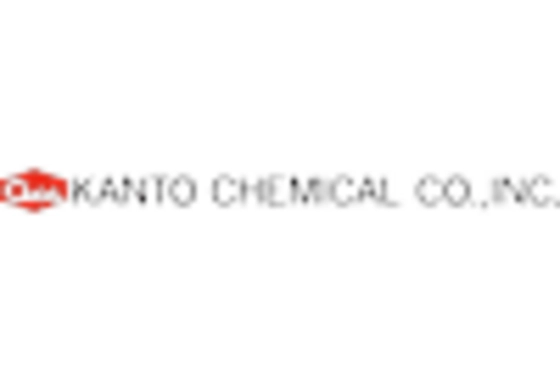The Chlorine Trifluoride Market is characterized by a dynamic competitive landscape, driven by increasing demand in various applications, including semiconductor manufacturing and rocket propulsion. Key players such as Air Products and Chemicals, Inc. (US), BASF SE (DE), and Honeywell International Inc. (US) are strategically positioned to leverage their technological expertise and extensive distribution networks. Air Products and Chemicals, Inc. (US) focuses on innovation and sustainability, aiming to enhance its product offerings while reducing environmental impact. Meanwhile, BASF SE (DE) emphasizes regional expansion and partnerships to strengthen its market presence, particularly in Asia-Pacific, where demand is surging. Honeywell International Inc. (US) is investing in digital transformation initiatives to optimize its operations and improve customer engagement, thereby shaping a competitive environment that prioritizes technological advancement and sustainability.
The business tactics employed by these companies reflect a concerted effort to localize manufacturing and optimize supply chains, which is crucial in a moderately fragmented market. This competitive structure allows for a diverse range of offerings, yet the influence of major players remains significant. Their ability to adapt to regional market demands and streamline operations positions them favorably against emerging competitors, thereby reinforcing their market dominance.
In August 2025, Air Products and Chemicals, Inc. (US) announced a strategic partnership with a leading semiconductor manufacturer to supply chlorine trifluoride for advanced chip production. This collaboration not only enhances Air Products' market share but also underscores the growing importance of chlorine trifluoride in high-tech applications, indicating a shift towards more specialized uses of the chemical. The partnership is expected to drive innovation in semiconductor manufacturing processes, positioning Air Products as a key player in this niche market.
In September 2025, BASF SE (DE) launched a new production facility in Southeast Asia dedicated to chlorine trifluoride, aimed at meeting the rising demand in the region. This strategic move is significant as it not only increases BASF's production capacity but also reduces lead times for customers in a rapidly growing market. The facility is expected to enhance BASF's competitive edge by providing localized solutions that cater to the specific needs of Asian customers, thereby solidifying its market position.
In July 2025, Honeywell International Inc. (US) unveiled a new digital platform designed to optimize the supply chain for chlorine trifluoride, enhancing transparency and efficiency. This initiative reflects Honeywell's commitment to integrating advanced technologies into its operations, which is increasingly vital in today's market. By leveraging data analytics and AI, Honeywell aims to improve inventory management and customer service, thereby reinforcing its competitive advantage in a landscape that is becoming more reliant on digital solutions.
As of October 2025, the Chlorine Trifluoride Market is witnessing trends that emphasize digitalization, sustainability, and technological integration. Strategic alliances among key players are shaping the competitive landscape, fostering innovation and collaboration. The shift from price-based competition to a focus on technological differentiation and supply chain reliability is evident, suggesting that companies will need to continuously innovate to maintain their competitive edge. Looking ahead, the evolution of competitive differentiation will likely hinge on the ability to adapt to these trends, with a strong emphasis on sustainable practices and advanced technological solutions.


















Leave a Comment